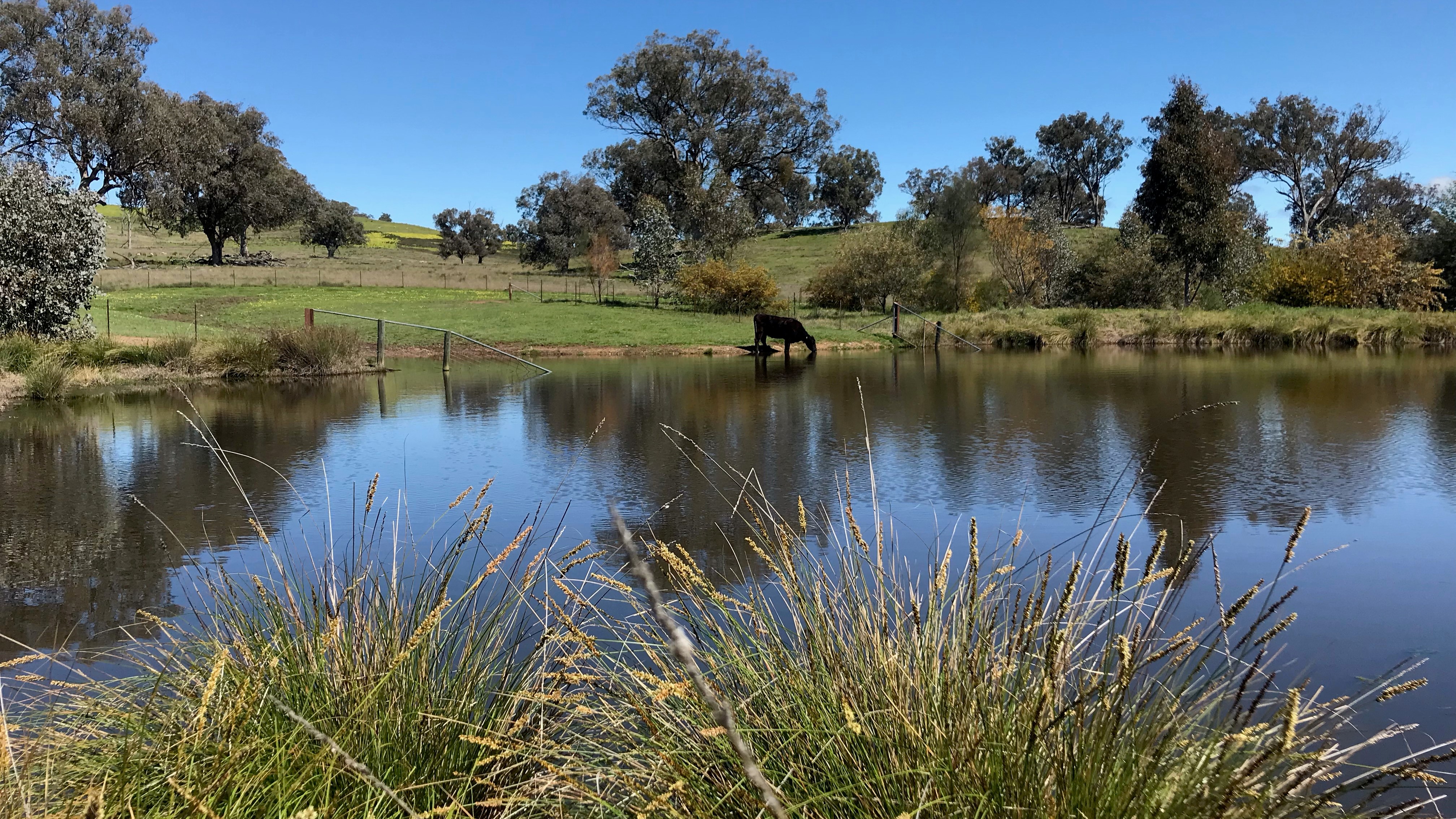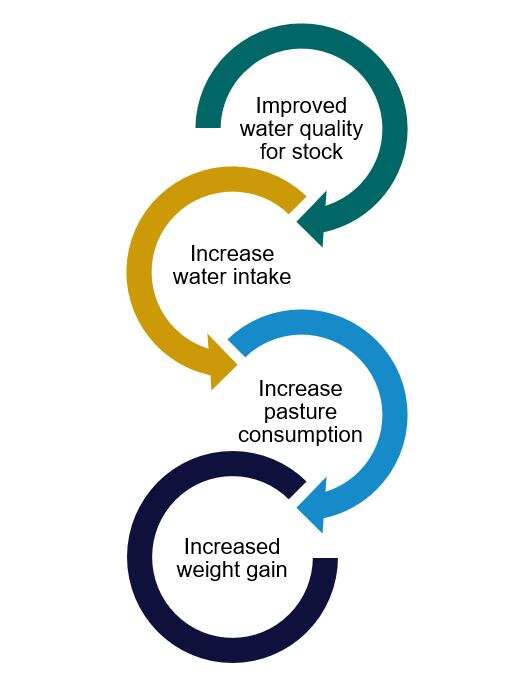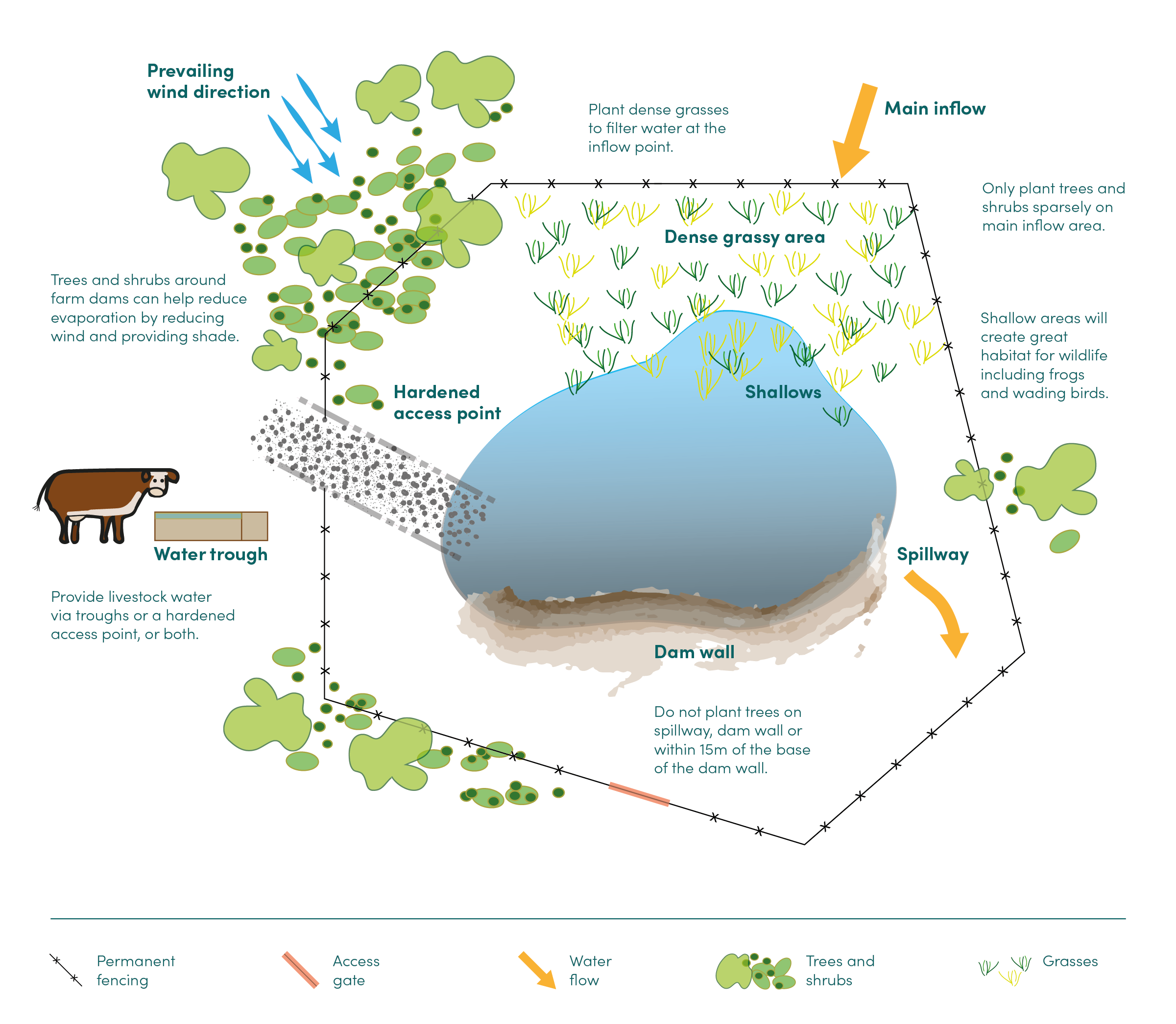
Benefit-cost analysis lends support for improved farm dam management
New Sustainable Farms research looking at the potential net benefits from enhancing farm dams has yielded promising results.
Sustainable Farms Economics Research Fellow Dr Helena Clayton said that the study is an important proof-of-concept, demonstrating the potential for improved farm profit if water quality and animal weight gains can be achieved from enhancing farm dams.
The benefit-cost analysis has been published in the scientific journal PLOS One.
“There is emerging evidence, including via existing Sustainable Farms research and partnerships, for the benefits of renovating farm dams for wildlife, landscape function, carbon emissions and water quality,” Dr Clayton said. “This cost-benefit analysis is another piece of the puzzle, contributing to our growing understanding about potential gains for farmers investing in their natural assets, such as farm dams.”
The newly published research found that there is potential for improved farm profit for cattle grazing enterprises, as a result of livestock weight gain associated with cleaner dam water. The assessment of potential farm profit assumed cattle consuming cleaner water would exhibit weight gain of 11%, a figure that was derived as an average across three different studies conducted overseas (the only studies currently available in the international literature).
The study found the potential per-farm benefit-to-cost ratio from enhancing farm dams across the whole-farm was 1.5 for New South Wales and 3 for Victoria. These figures reflect higher stocking rates on comparable Victorian properties, based on ABARES farm survey data.
The study authors also found that a farm which renovated all dams could break-even with a weight gain of 6.5% in cattle in NSW, and 1.8% in Victoria, over a 50-year time period.
The assumed weight gain used in the benefit-cost analysis was based on data from three North American studies. These studies found average weight gains of 0, 9 and 23% respectively, for cattle with access to cleaner water compared to farm dam water with high levels of e-coli. To account for the uncertainty in weight gain, further analysis was conducted simulating equal chance of achieving 0, 9 and 23% weight gain values. These conservative assumptions indicated that the probability of per-farm benefits exceeding costs was greater than 70%. More work localised to Australian conditions is required to improve understanding and confidence in weight gain expectations.

Biological mechanism underpinning weight gain.
“The next step for Sustainable Farms is to better understand what drives or constrains farmer investment in enhancing farm dams,” Dr Clayton said. “Given the emerging evidence for the benefits of enhancing farm dams, the question is why dam enhancements are not taken up more widely among Australian farmers. Our aim is to build an understanding of farmer assessment of the benefits and costs of dam enhancements, and thus the feasible uptake of improved dam management practices across our study area.”
The benefit-cost analysis was led by ANU economist Associate Professor Leo Dobes and co-authored by economics and ecology researchers including Sustainable Farms Lead Scientist Professor David Lindenmayer.
The full paper can be accessed here.


